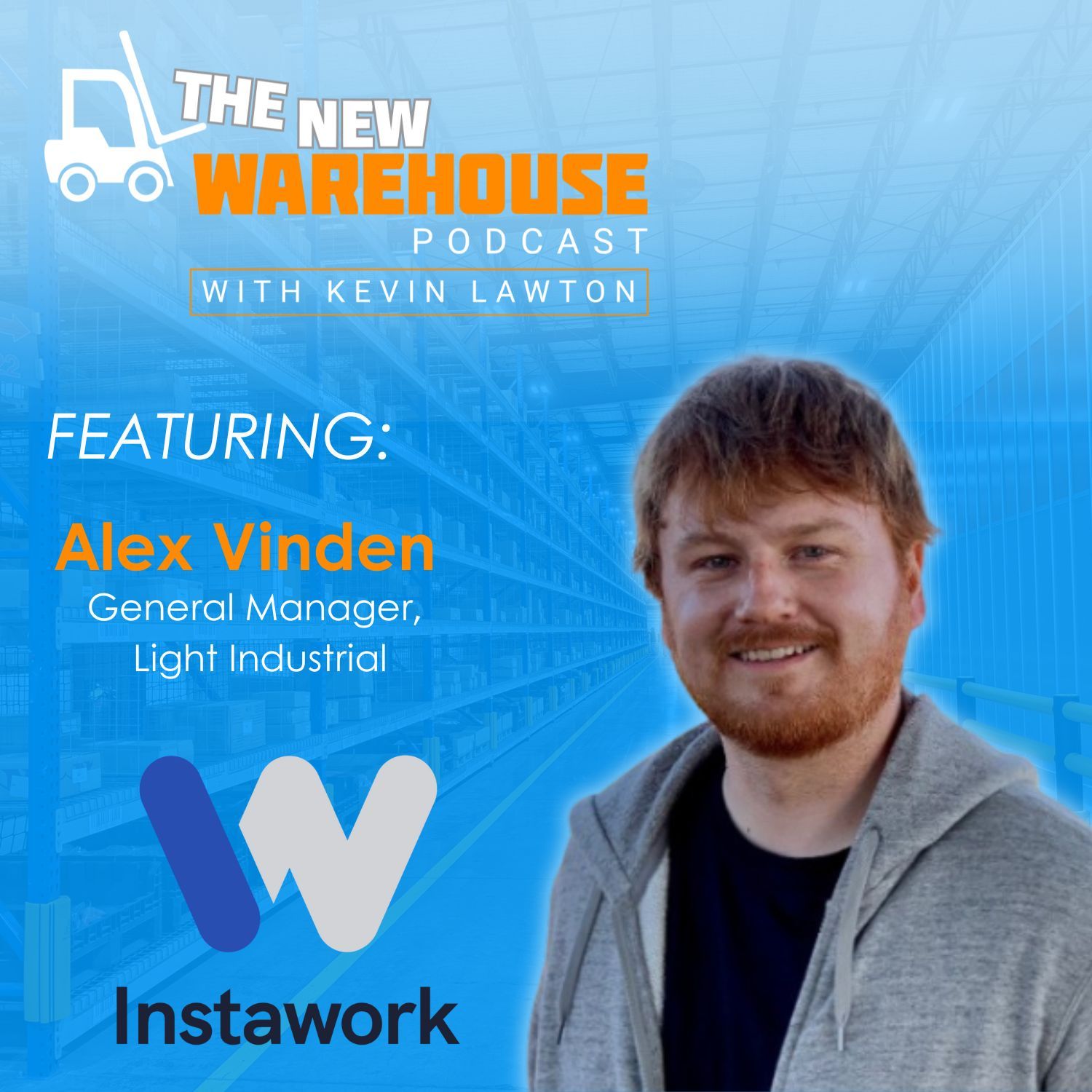
611: Instawork is Tackling Warehouse Talent Shifts with Flexibility and Data
Welcome to this episode of The New Warehouse Podcast, where Kevin chats with Alex Vinden, General Manager of Light Industrial at Instawork. Instawork is a flexible staffing platform redefining how warehouses meet labor demands. Alex dives into Instawork’s tech-powered approach to temporary staffing, its role in collecting real-time labor data, and key insights from their latest State of Warehouse Labor report. As warehouses grapple with evolving labor needs and the uncertainty of tariffs, Alex breaks down the emerging trends and why flexibility is no longer optional; it’s essential for attracting and retaining top warehouse talent.
Leveraging Data to Redefine Staffing Models
Instawork stands out by blending traditional staffing needs with a tech-first model. Instead of relying solely on resumes, they analyze real-time job performance to match workers with warehouse needs better. According to Vinden, this shift provides unprecedented visibility for both staffing partners and operators. “When you’re working with a traditional agency, all of the best data that they can get comes off of the worker’s resume… whereas Instawork can go deeper and use their actual on-the-job performance.”
Instawork collects data at multiple points, including wage rates, attendance, job type, and performance metrics, down to the zip code level. This data helps them stay ahead of trends. For example, they can spot wage shifts before government labor reports catch up. Their layered data approach provides warehouses with a granular view of worker reliability and performance by role.
The Surprising Warehouse Talent Gap: General Warehouse Roles
While skilled roles like forklift operators are traditionally harder to fill, Instawork’s recent labor report flips that narrative. “40% of [our partners] reported the biggest challenge was general labor-type warehouse roles… and 22% said pick and pack,” adds Vinden. That’s over 60% of staffing difficulty centered around what many assume to be entry-level work. As Alex explains, many companies now use these roles as top-of-funnel recruitment—training entry-level staff to grow into more technical positions.
“Getting reliable people in the door consistently has been a really large challenge.” Why? General laborers now have more options, ranging from gig economy work to lower-effort roles in the hospitality industry. And when given a choice between lifting 75-pound boxes and delivering food, many opt for the less physically demanding route—especially if pay is equal.
Tariff Chaos and the Case for Flexibility
One of the hottest topics in warehousing right now? Tariffs. According to Alex, the industry is far from settled. “Right now we’ve seen massive decreases in CapEx and investment… People don’t know what to do.” Whether companies are shifting to 3PLs or trying to bring operations in-house, there’s a clear pattern: pause long-term decisions and stay agile. That’s where Instawork’s flexible labor model shines.
“The smart approach would be to simply pause hiring, lean on temporary staffing more until you see what your business’s reality is.” This flexibility allows operators to ramp up or down based on short-term needs while maintaining productivity. For facilities investing in automation, Instawork continues to play a vital role. Manual tasks, such as loading, sorting, and final packing, often remain human-dependent and require minimal training, making them ideal for temporary workers. “Each warehouse is so unique that ramping from zero to 100… takes several weeks of getting used to it.”
Key Takeaways on Warehouse Talent
- Wage rates have increased by 30% since 2021, but labor shortages are easing, particularly for skilled roles.
- The most challenging roles to fill are general warehouse labor and pick-pack jobs, not the skilled ones.
- Instawork’s platform collects granular data like punctuality, skill fit, and performance by task.
- Tariff uncertainty is halting long-term hiring, making flexible labor essential.
- Gen Z now makes up the largest share of the workforce, and they expect flexibility.
- Temporary staffing can serve as a bridge during volatility and reduce long-term cost risk.
Listen to the episode below and leave your thoughts in the comments.
Guest Information
For more information on Instawork, click here.
To connect with Alex on LinkedIn, click here.
For more information about warehouse talent, check out the podcasts below.
559: Tackling Labor Challenges in Warehousing with Spotwork
558: Robust AI is Delivering Collaborative Robotics in Warehousing

Tariffs in Warehousing: Strategies for Supply Chain Resilience
[…] 611: Instawork is Tackling Warehouse Talent Shifts with Flexibility and Data […]
The Warehouse Underground: Building Community in Warehousing
[…] conversation turned to one of the most pressing issues in warehousing: attracting and retaining warehouse talent. Ben emphasized that while pay remains essential, it’s not the whole story. “Quickly coming up […]